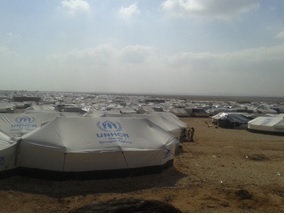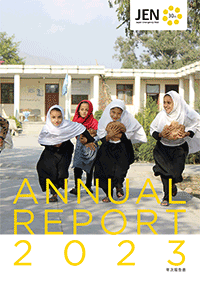The Challenges & Improvements in Za’atari Camp
My name is Ali Al-Jadooa; currently I am the Admin/Support Manager in JEN(Japan Emergency NGO), and I joined JEN in February 2013 as a community mobilization manager; at that time JEN was involved in hygiene promotion and clothes distribution to the refugees in Za’atari camp.
(Hygiene session with the community)
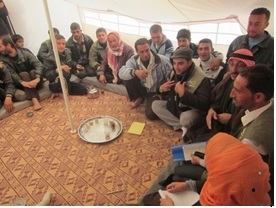
(Cloth distribution to the refugees in 2013)
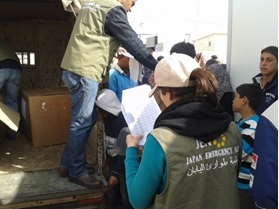
Za’atari camp opened in July 2012 after the crises started in Syria and it’s located in Jordan, 13 km from Syrian border; the camp was named Za’atari camp as the location of that land was in Za’atari village. The size of the camp is 6 km2. During that time, Syrian people had to leave their houses forcedly without any luggage while they sought for any safe zone. By the end, they reached to the Jordan border and arrived to Zaatari camp with the help of the Jordanian army.
(Public water tank installation in Zaatari camp)
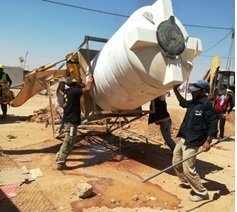
Due to unexpected continuous entering of large numbers of refugees on a daily basis, the logistics services of NGOs easily went over the capacity, and as a result, the refugees were frustrated and angry. On the other side, the NGO staff also faced many challenges starting from welcoming the refugees from their arrival till they settled in the place that they can live with dignity.
The settlement process included having each family (5 members +/-) get registered after arrival in UNHCR registration area that was located at the entrance of the camp, then receiving such as tent plus mattresses, and finally being escorted by the community mobilizers to the places that were arranged for each family. Water plus food must be delivered in a daily basis plus other important relief items such nonfood items to keep those refugees surviving and other cares like medical attention, looking after elderlies, disabled and babies were vital as well.
On average, 100 – 200 refugees entered the camp per day, but in some days the number reached 3,000 per day. It can be imaginable the big challenging of NGOs to do their job in best image.
I’d like to bring to light the challenges of humanitarian actors like JEN and the difficulties they faced when the Syrian refugees started to enter Za’atari camp and their settlement plus many improvements happened to the camp during the last 5 years to convert this empty land to almost a town up to standard.
I’d like to appreciate and thank all humanitarian staff that they were involved and faced all challenges to keep the refugees living with dignity.
(Water and Waste Water Network constructions)
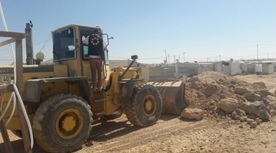
△▼△▼△▼△▼△▼△▼△▼△▼△▼△▼△▼△▼△
JEN will be there for the most vulnerable households to keep providing the support they need.
【JEN is now accepting donations. Your help would be very much appreciated. DONATE here】

![Jordan[Syrian refugees] Blog](/en/project/images/mainimg_project_jordan.jpg)
